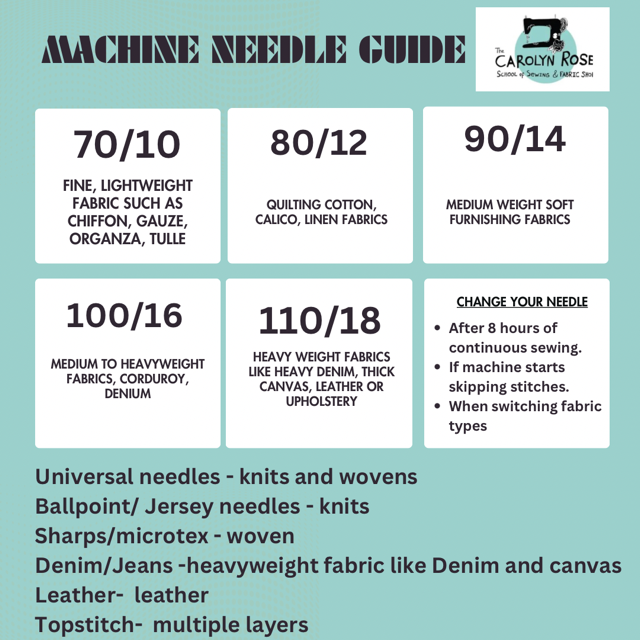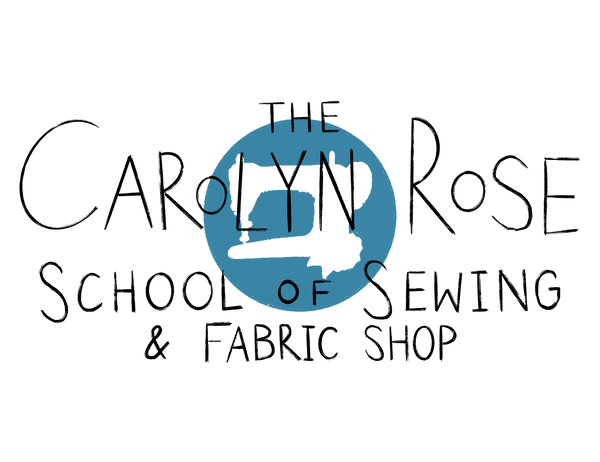
Machine Needle Guide
![]()
Here at Carolyn Rose we often get asked about needles. We have put together this little guide to help you get the point (did you see what we did😊)

The first thing to know is that sewing machines needles are standardised. They are compatible across the range of brands, including Janome, Brother, Bernina, Elna, Pfaff etc. You can be safe in the knowledge that any sewing machine needle purchased from us will be compatible with any relatively modern domestic sewing machine.
What do the numbers mean?
If you are wondering what the size number such as 80/12 or 110/18 on sewing machine needles mean. Wonder no more! Of the two numbers, one is the European size and one is the American size. From thinnest to thickest, the European sizes range from 60 to 110, whereas the American sizes range from 8 to 18.
Generally, a 80/12 needle is used for dressmaking (and will probably be the size of needle you received with your sewing machine) Please refer to the quick reference table above for information on which needle sizes to use with particular threads, fabric types and fabric weights.
How Often Should I Change My Needle?
It is generally recommended that a needle should be changed after 8 continuous hours of sewing, however we recommend changing your needle after every project. Needles are pretty cheap, so it's not going to break the bank and you have the assurance that your needle will always perform as expected.
We also recommend giving the needle a good visual inspection if you machine has jammed. Jamming can result in the needle bending, which can lead to unexpected results such as poor stitch quality. If your machine is making an unusual thumping sound as the needle penetrates the fabric, then you definitely need to change the needle.
Fitting a New Needle
To fit a new needle the first thing we recommend is to pop a piece of paper or plain fabric under the foot. Then, when loosening the needle screw, there is no danger of the old needle dropping inside the machine. We don't want any expensive repair bills! Remove the old needle and dispose of it responsibly. The new needle will only fit in the correct orientation due to the shank design. The flat side of the shank should face towards the rear of the sewing machine.
Make sure you push the new needle up as far as it will go before tightening the needle screw. If you don't you may get poor stitch quality, the needle could strike the bobbin case or your needle threader could be damaged (if your machine has one).
Now, let’s be a needle nerd and look at the various parts of the sewing machine needle.

Eye - The hole in which the thread slides through. Good quality needles have a smoothly machined eye to minimise thread shredding. The eye size varies according to the intended thread type.
Shaft - The shaft varies in thickness according to the intended fabric - thicker materials require a stiffer shaft.
Shank - The part goes into the machine. Has a flat side to prevent incorrect insertion.
Point - The point shape varies widely between different needle types, from ball point for knit fabrics to chisel shaped for leather.
Scarf - Enables the hook to get close to the eye of the needle to avoid skipped stitches.
We hope that you have found this useful and don’t forget, if you have any questions please feel free to pop into the shop or message us anytime.
Blog by Sam Whittaker
For Carolyn Rose School of Sewing
